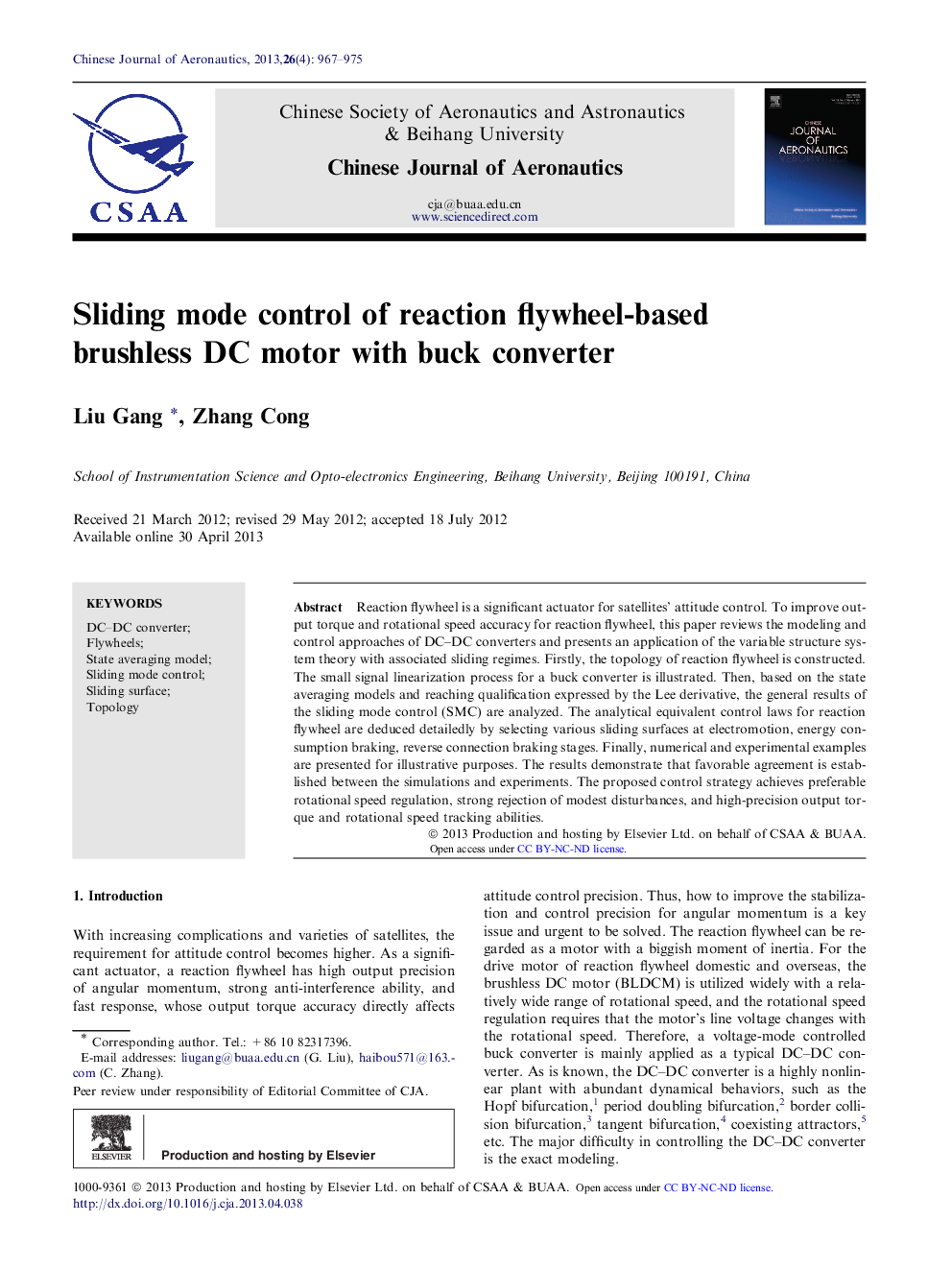| Article ID | Journal | Published Year | Pages | File Type |
|---|---|---|---|---|
| 757877 | Chinese Journal of Aeronautics | 2013 | 9 Pages |
Reaction flywheel is a significant actuator for satellites’ attitude control. To improve output torque and rotational speed accuracy for reaction flywheel, this paper reviews the modeling and control approaches of DC–DC converters and presents an application of the variable structure system theory with associated sliding regimes. Firstly, the topology of reaction flywheel is constructed. The small signal linearization process for a buck converter is illustrated. Then, based on the state averaging models and reaching qualification expressed by the Lee derivative, the general results of the sliding mode control (SMC) are analyzed. The analytical equivalent control laws for reaction flywheel are deduced detailedly by selecting various sliding surfaces at electromotion, energy consumption braking, reverse connection braking stages. Finally, numerical and experimental examples are presented for illustrative purposes. The results demonstrate that favorable agreement is established between the simulations and experiments. The proposed control strategy achieves preferable rotational speed regulation, strong rejection of modest disturbances, and high-precision output torque and rotational speed tracking abilities.
